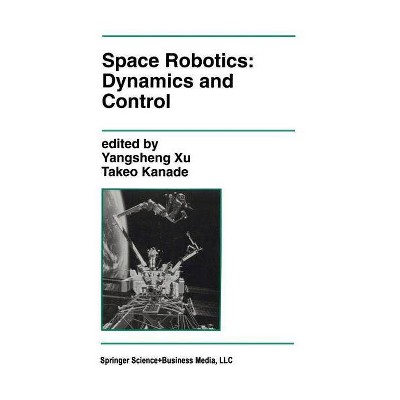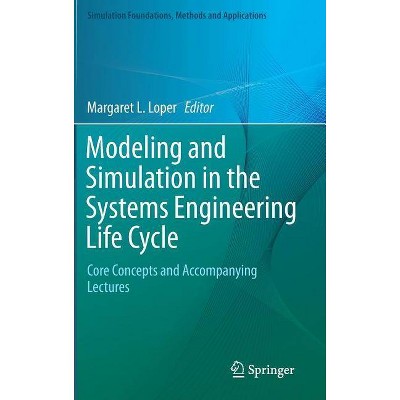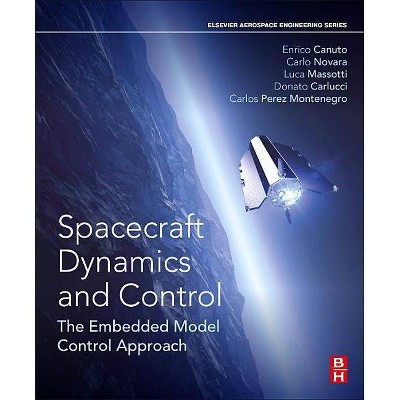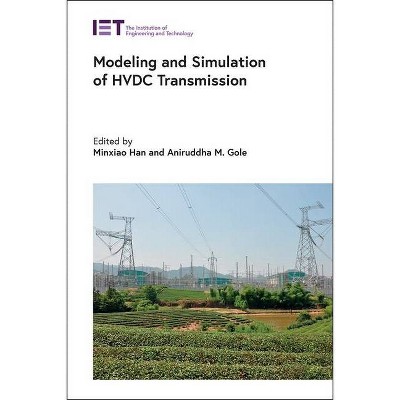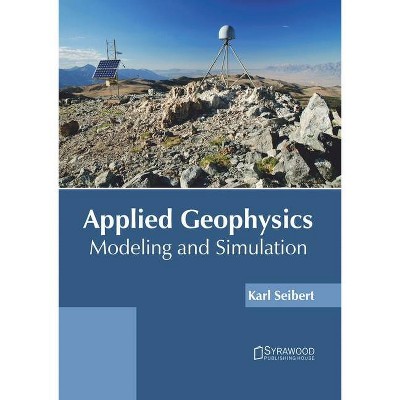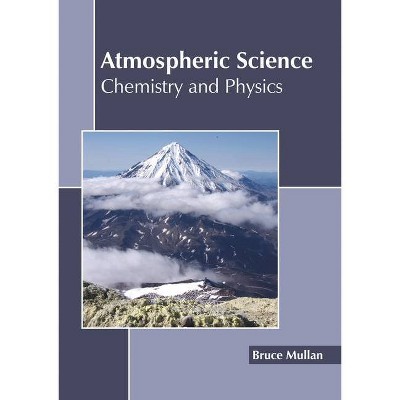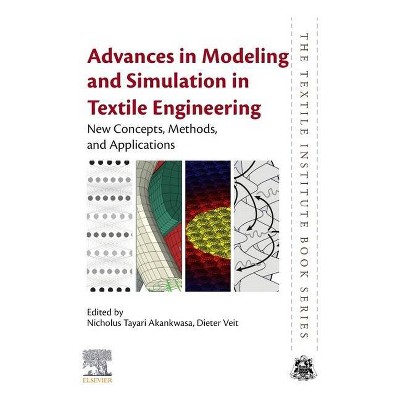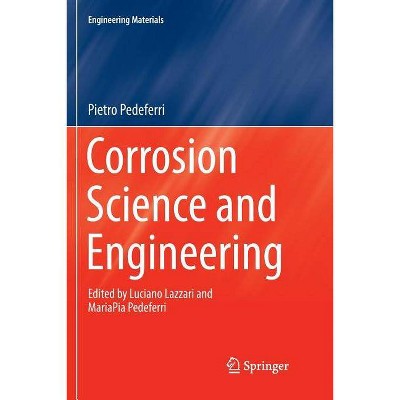Atmospheric and Space Flight Dynamics - (Modeling and Simulation in Science, Engineering and Technolo) by Ashish Tewari (Paperback)
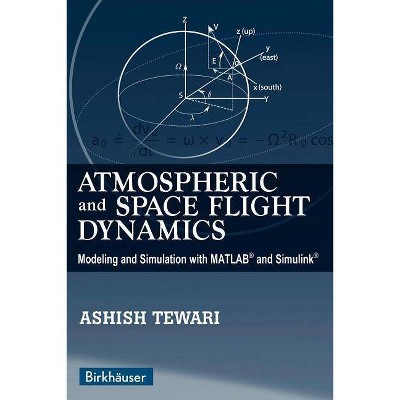
Similar Products
Products of same category from the store
AllProduct info
<p/><br></br><p><b> About the Book </b></p></br></br><p>This book offers a unified presentation that does not discriminate between atmospheric and space flight. It introduces a broad range of modern topics in an accessible, yet mathematically rigorous presentation, with many numerical examples and simulations.</p><p/><br></br><p><b> Book Synopsis </b></p></br></br><p>Modern aerospace vehicles, such as the space shuttle, other launch vehicles, and long-range ballistic missiles, do not discriminate between atmospheric and space flight. Most texts on flight dynamics, however, make this artificial distinction and therefore do not simultaneously cover aircraft and spacecraft. Bridging this gap in the literature, <em>Atmospheric and Space Flight Dynamics </em>is a unified presentation, demonstrating that the two disciplines have actually evolved from the same set of physical principles.</p> <p>Key features: </p> <p>* Introduction to a broad range of modern topics in an accessible, yet mathematically rigorous presentation</p> <p>* Many numerical examples and simulations utilizing MATLAB<sup>(R)</sup> and Simulink<sup>(R)</sup> fully integrated throughout the work</p> <p>* Simulations presented--usually not found in books on the same topic--are both realistic and instructive</p> <p>* Examples allow readers to easily build their own simulations for aircraft, missiles, launch vehicles, reentry vehicles, and spacecraft</p> <p>* Software is used as an instructional, hands-on tool, moving away from the "cookbook" approach found in other works</p> <p>* Supplementary material and MATLAB/Simulink code available at http: //home.iitk.ac.in/ ashtew/index_files/page0009.htm</p> <p>* Numerous illustrations and end-of-chapter exercises</p> <p>* Separate solutions manual available to instructors upon request</p> <p>Primarily useful as a textbook for advanced undergraduate and beginning graduate-level students, the work is also an excellent reference or self-study guide for researchers and practitioners in aerospace engineering, aviation, mechanical engineering, dynamics, astrodynamics, aeronautics, and astronautics.</p><p/><br></br><p><b> From the Back Cover </b></p></br></br><p>Modern aerospace vehicles, such as the space shuttle, other launch vehicles, and long-range ballistic missiles, do not discriminate between atmospheric and space flight. Most texts on flight dynamics, however, make this artificial distinction and therefore do not simultaneously cover aircraft and spacecraft. Bridging this gap in the literature, <em>Atmospheric and Space Flight Dynamics </em>is a unified presentation, demonstrating that the two disciplines have actually evolved from the same set of physical principles.</p> <p>Key features: </p> <p>* Introduction to a broad range of modern topics in an accessible, yet mathematically rigorous presentation</p> <p>* Many numerical examples and simulations utilizing MATLAB<sup>(R)</sup> and Simulink<sup>(R)</sup> fully integrated throughout the work</p> <p>* Simulations presented--usually not found in books on the same topic--are both realistic and instructive</p> <p>* Examples allow readers to easily build their own simulations for aircraft, missiles, launch vehicles, reentry vehicles, and spacecraft</p> <p>* Software is used as an instructional, hands-on tool, moving away from the "cookbook" approach found in other works</p> <p>* Supplementary material and MATLAB/Simulink code available</p> <p>* Numerous illustrations and end-of-chapter exercises</p> <p>* Separate solutions manual available to instructors upon request</p> <p>Primarily useful as a textbook for advanced undergraduate and beginning graduate-level students, the work is also an excellent reference or self-study guide for researchers and practitioners in aerospace engineering, aviation, mechanical engineering, dynamics, astrodynamics, aeronautics, and astronautics.</p><p/><br></br><p><b> Review Quotes </b></p></br></br><br><p>"This book combines in a unified presentation both atmospheric and space flight dynamics in an introductory but rather broad level. The approach followed is very interesting and is well-suited to either teaching undergraduate students or complementing first-year graduate students. In fifteen chapters, topics like orbital mechanics, including some perturbations and details about the restricted three-body problem, rocket propulsion, atmospheric and transatmospheric trajectories, attitude and control are considered in a clear presentation. This condensed book even has some introductory explanations of kinematics and nice details about modeling the planetary atmosphere or the Earth's gravitational field, which makes it self-contained.</p> <p>The approach followed in each chapter is useful and direct with a list of objectives, many worked examples, exercises and a final summary. Another interesting fact is that the book contains the implementation of the computations, in the way suggested by the author, using MATLAB code. This provides a distinct interpretation of formulae; moreover, it is not an obstruction for non-MATLAB users since the code is easy and easily movable to other programming languages." <strong>--Mathematical Reviews</strong></p> <p>"This is a textbook for both undergraduate and graduate students studying aerospace and astronautics engineering. In fact the book is unique as it treats both atmospheric and space flights, namely, aircrafts and spacecrafts...Each chapter starts with aims and objectives and ends with a short summary and exercises which are solved by using MATLAB and Simulink codes." <strong>--Zentralblatt MATH</strong></p><br>
Price History
Price Archive shows prices from various stores, lets you see history and find the cheapest. There is no actual sale on the website. For all support, inquiry and suggestion messagescommunication@pricearchive.us

